Elevating Girls’ Health, Worldwide
December 12, 2023
“Our time is now—our rights, our future”
Many girls around the world face challenges to their health and well-being. In many places, girls are disadvantaged by discrimination rooted in cultural beliefs and ideas about gender. Gender inequality puts girls’ health and well-being at risk by causing girls to face barriers to getting health information and services and placing them at increased risk for health and safety issues.
Read on to learn about some of the challenges girls across the world face and how CDC is helping to improve the health and wellbeing of girls.
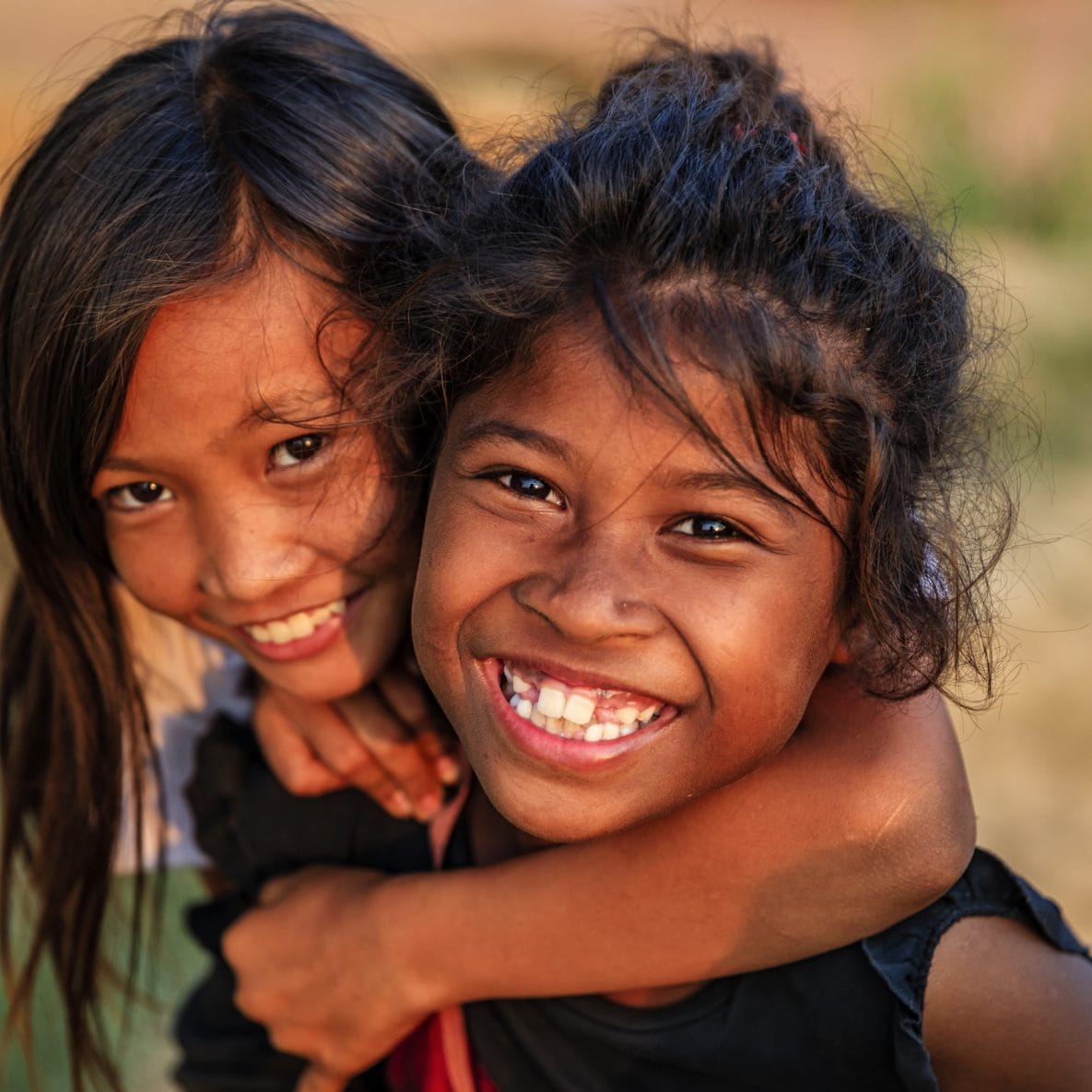
Two Cambodian girls embrace and smile.
Ending Gender-Based Violence
Violence against women and girls starts early: Based on a recent large-scale review of violence against women prevalence studies across the globe, WHO found that nearly 1 in 4 adolescent girls who have had an intimate relationship have been subjected to physical and/or sexual violence by an intimate partner at least once in their lifetime.
Violence against children and youth, particularly sexual violence against girls, is a global human rights and public health crisis. Experiencing violence in childhood and adolescence can profoundly impact emotional and physical health and social development.
Girls are at higher risk for experiencing gender-based violence (GBV) – including sexual violence and physical violence – than boys. GBV is any form of violence against an individual based on biological sex, gender identity, or expression, or being perceived to be a man, woman, boy, or girl based on socially defined expectations. GBV can include physical, sexual, and psychological abuse; threats; coercion; and restrictions on freedom. GBV is also rooted in gender-related power differences that are complex and operate at an individual, relational, and societal level.
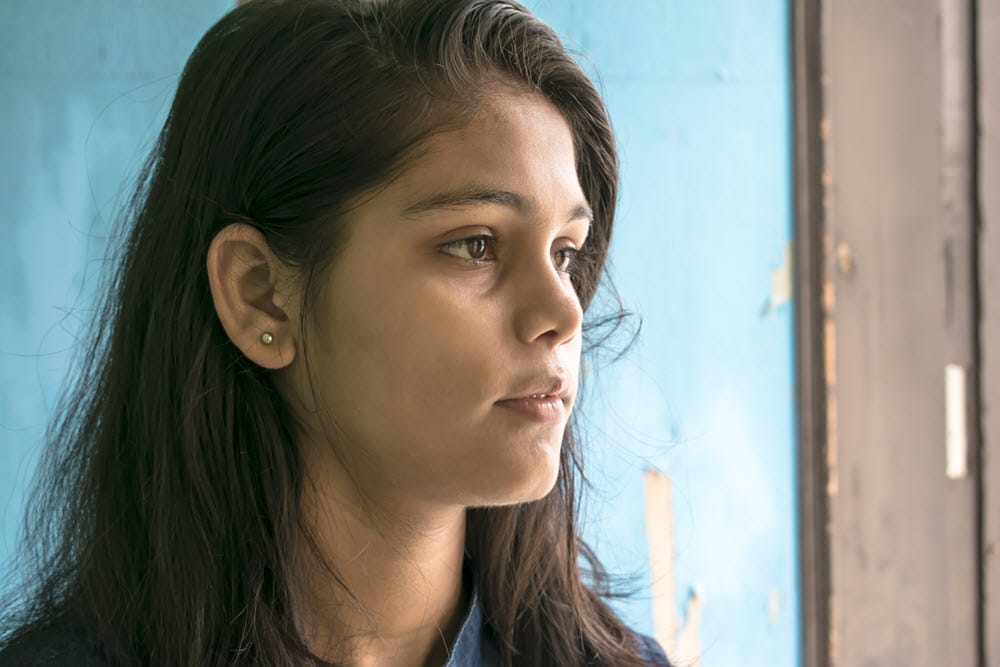
Teen girl in India looks contemplative.
GBV is also linked to economic insecurity. Those who live in chronic poverty may find themselves more likely to experience situations in which they must risk violence to access fundamental resources. For example, an adolescent girl may be forced to exchange sex for material resources to meet her basic needs. In addition, those who are financially insecure may be more likely to live in locations that are prone to conflict, have fewer support services, and offer weaker legal protections.
Efforts to understand how often violence happens, where it occurs, and its impacts on the health and well-being of children and youth are a first step in preventing violence globally. High-quality, timely data delivers critical information to develop prevention strategies that help policymakers and practitioners make decisions as they select, adapt, and implement activities to prevent and respond to violence against children. CDC and Together for Girls is a broad partnership between national governments, United Nations (UN) entities, and private sector organizations, that work at the intersection of violence against children and women to encourage prioritization, prevention, and response, with special attention to sexual violence against girls. Learn more about this network of partnerships and their work: Linking Violence Against Children and Youth Surveys to Coordinated and Effective Action: CDC and the Together for Girls Partnership.
Preventing HIV Infection
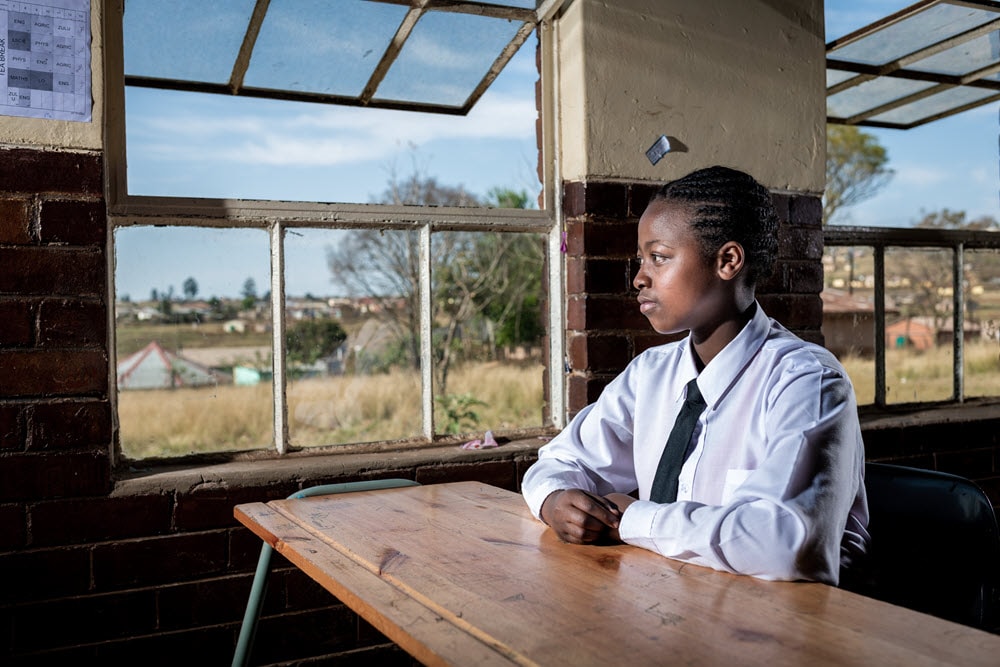
Fifteen-year-old Nolwazi lives in a district where a girl her age has a 50 percent chance of finishing high school and an 80 percent chance of contracting HIV. As a participant in the CDC- and PEPFAR-supported DREAMS empowerment program for girls, she is committed to becoming a doctor one day. Photo credit ©Thom Pierce.
According to The Joint United Nations Programme on HIV/AIDS (UNAIDS) Global Commitments, Local Action Report, in sub-Saharan Africa, six out of seven new HIV infections among adolescents aged 15–19 years are among girls and women, and in 2021, girls accounted for more than 60 percent (63%) of all new HIV infections in this region. The root causes that give rise to the disproportionate burden of HIV among young women and girls are complex – poverty, access to education, violence, harmful social/cultural norms, and access to preventive care and treatment. Because every girl is part of a larger community, it is important to reach out to and work with families and communities to build skills and support that help to protect girls against HIV.
CDC works on several fronts to make an impact in the fight against HIV among young women and girls. In 2014, as part of U.S. President’s Emergency Plan for AIDS Relief (PEPFAR), CDC helped launch the DREAMS initiative, a multi-pronged approach to help adolescent girls and young women live Determined, Resilient, Empowered, AIDS-free, Mentored, and Safe lives. Through this effort, PEPFAR and its implementing agencies aim to drive down HIV infections among girls ages 15-24 in high-burden geographic areas.
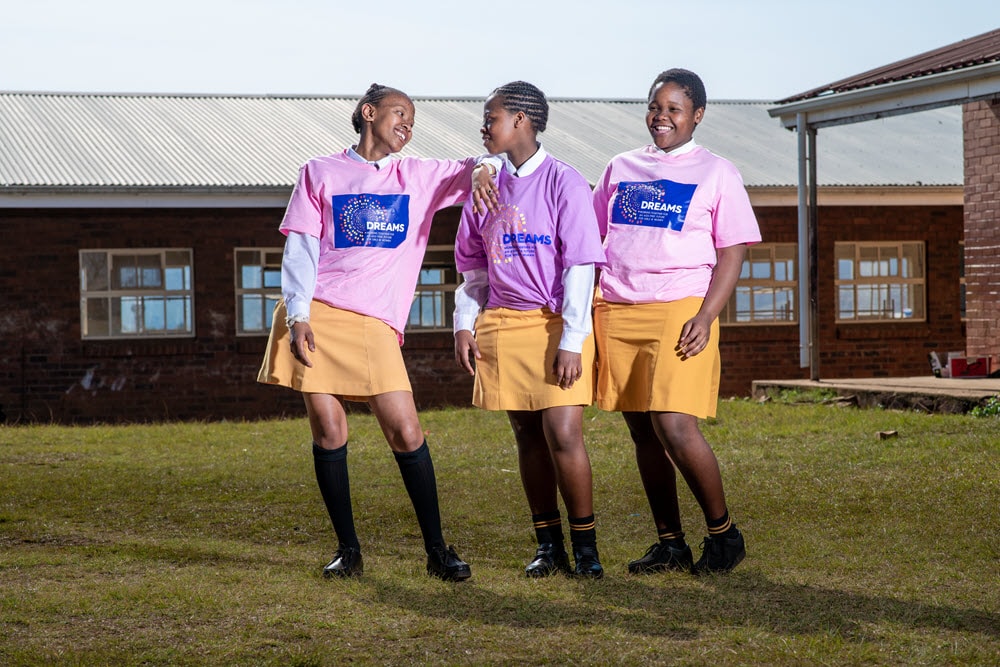
Gugulethu (Left) wants to be a surgeon when she grows up; Nolwazi (Middle) wants to be a doctor; Olwethu (Right) wants to be a teacher. Through the DREAMS program, CDC and PEPFAR are helping them make their dreams a reality. Photo credit: ©Thom Pierce.
DREAMS public-private partnerships consist of a core package of evidence-based interventions that address the many overlapping vulnerabilities of adolescent girls. These interventions are being implemented by CDC in 13 countries: Botswana, Cote d’Ivoire, Eswatini, Haiti, Kenya, Lesotho, Malawi, Mozambique, South Africa, Tanzania, Uganda, Zambia, and Zimbabwe. DREAMS works across communities to empower young women and girls by expanding educational access and economic training, creating supportive and empowering environments to build skills that protect against HIV, and implementing programs that expand access to treatment for HIV-positive girls, women, and men.
Protecting Girls from Cervical Cancer
Cervical cancer claims the lives of over 300,000 women worldwide each year – one woman every two minutes. Most of these women live in low- and middle-income countries. HPV vaccines are safe and effective, and they can prevent most HPV-associated cancers, including cervical cancer. This is especially important in low-income countries with limited access to screening.
Recognizing the opportunity to prevent unnecessary deaths, countries are introducing HPV vaccinations nationwide for all girls. Through tailored strategies, low- and middle-income countries are able to introduce the HPV vaccine by developing plans to reach girls between the ages of 9 and 14.
During 2016–2021, more countries introduced the HPV vaccine as a standard vaccine than any other vaccine. The number of countries that had introduced HPV vaccine nationally increased by 65%, from 69 countries in 2016 to 114 in 2021. In low-income countries, HPV vaccine remains one of the most underutilized vaccines. HPV vaccination efforts require improved understanding, engagement, training, and communication with cross-sector partnerships. Further efforts must also prioritize health education about HPV vaccination among girls within the desired age group and their parents.
Ensuring Menstrual Health and Hygiene
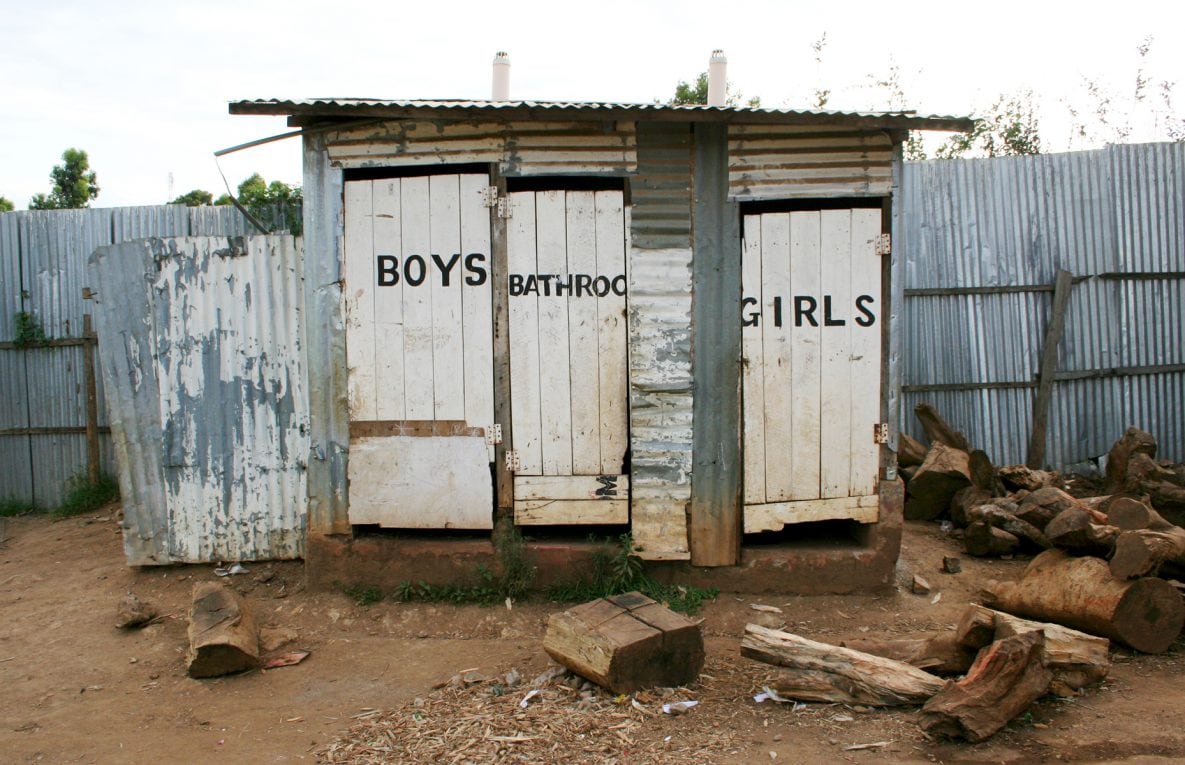
A toilet shack for boys and girls at a school in Nairobi, Kenya.
Menstrual Health and Hygiene (MHH) is essential to the well-being and empowerment of girls, yet it presents significant challenges for girls in resource limited settings. Menstruation is a natural fact of life and a monthly occurrence for the 1.8 billion girls and non-binary persons of reproductive age. Yet millions of menstruators across the world are denied the right to manage their monthly menstrual cycle in a dignified and safe manner. While menstruation is a normal and healthy part of life for most girls, the experience can be constrained by cultural taboos and discriminatory social norms. Poor MHH exacerbates inequalities, negatively impacting girls’ education, health, and safety. In many places globally, practicing personal hygiene may be limited due to a lack of necessities such as clean water and soap. Ensuring that girls have the ability to access basic supplies and infrastructure including,
Girls often report missing school due to their period. When in school, students may struggle to manage menstruation if toilets lack the necessary facilities to enable them to wash and change when needed. Attending schools with functional single-sex toilets that provide a private place to wash and change, as well as a reliable supply of water and soap, will support girls to manage their periods with confidence and dignity.
While access to basic WASH services is essential for the health and well-being of people of all ages and genders, poor quality services disproportionately impact girls who often struggle to manage their menstrual hygiene while in school. Appropriate facilities are especially important in ensuring girls’ safe and healthy participation in school and have been associated with improved attendance.
Learn more about menstrual health and hygiene (MHH) as a public health concern and the social exclusion, stigma, and discrimination some menstruators face across the life course.
Conclusion
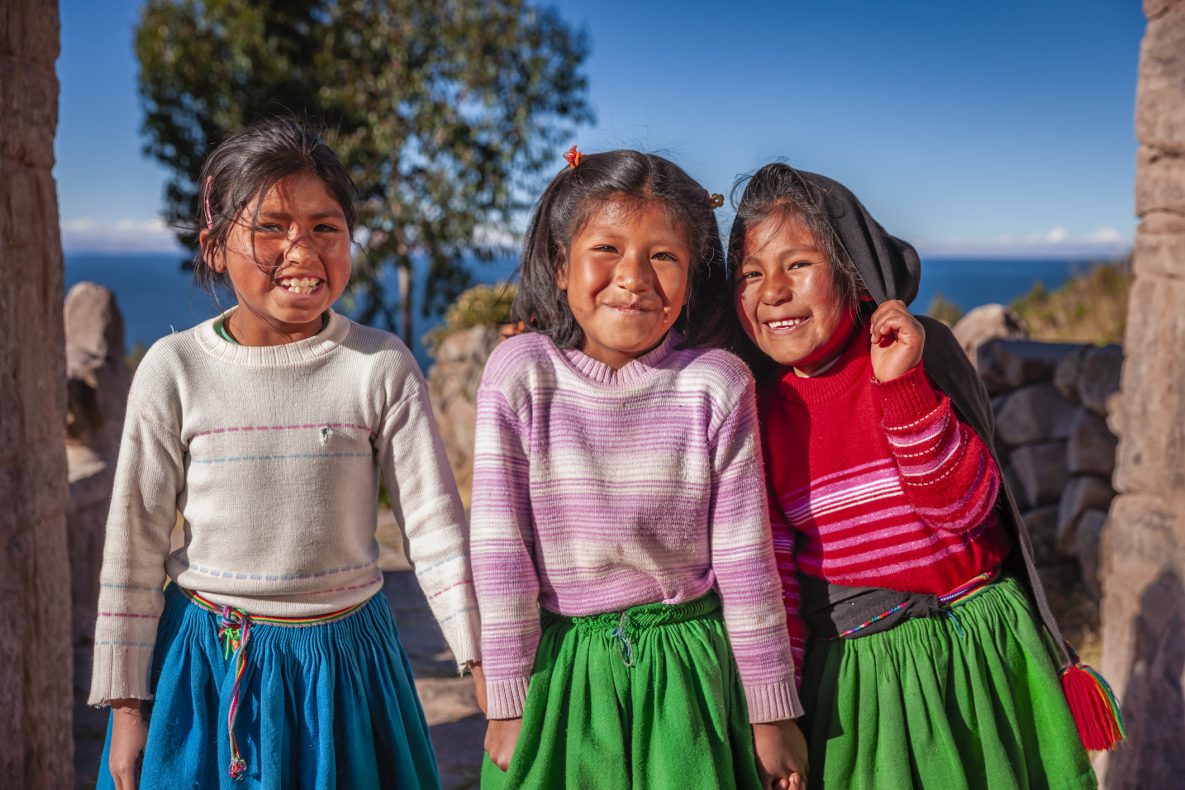
Three Peruvian girls smile outdoors
Sustained action is needed to ensure girls, in all their diversity, can enjoy the right to optimal health. This starts by ensuring essential health and support services for all girls and prioritizing health needs on a global scale. Supporting girls’ pathway from education to employment requires more than learning opportunities, it requires keeping girls safe and healthy from all forms of violence, ensuring access to resources and information to mitigate HIV and reduce cervical cancer risk, and the ability to access adequate WASH services in and outside of school.
We all have a role to play. Let’s make the commitment to improve girl-centered services that support quality and inclusive education, as well as access to physical and mental health resources. We can ensure the health and well-being of girls are prioritized at every phase of their lives by integrating gender equitable approaches to our programs and strategies.
Additional Resources
- Where We Work – Together For Girls
- INSPIRE Technical Package – WHO
- WHO Announced as a Global Leader of the Generation Equality Action Coalition on Ending Gender-Based Violence
- WHO Statement on Menstrual Health and Rights
- Protecting Girls in Sierra Leone from COVID-19 and Cervical Cancer Through Joint Vaccination Events | Global Health | CDC
- Health Promotion Materials | Global Water, Sanitation and Hygiene | Healthy Water | CDC
- Status of New Vaccine Introduction — Worldwide, 2016–2021 | MMWR (cdc.gov)